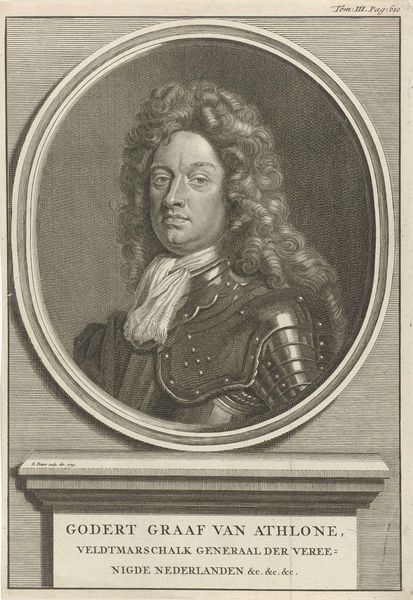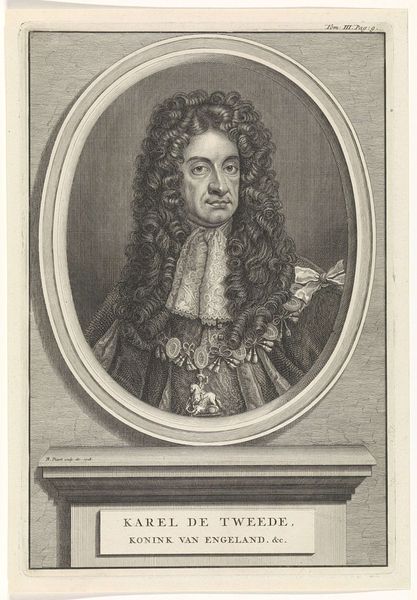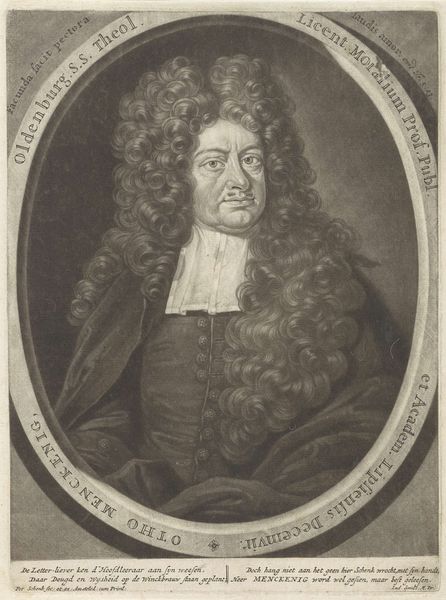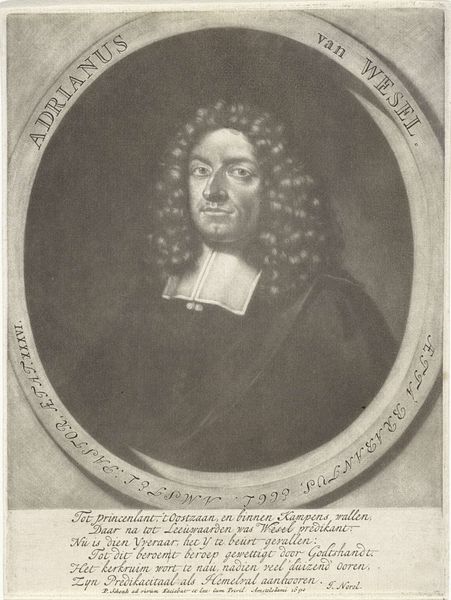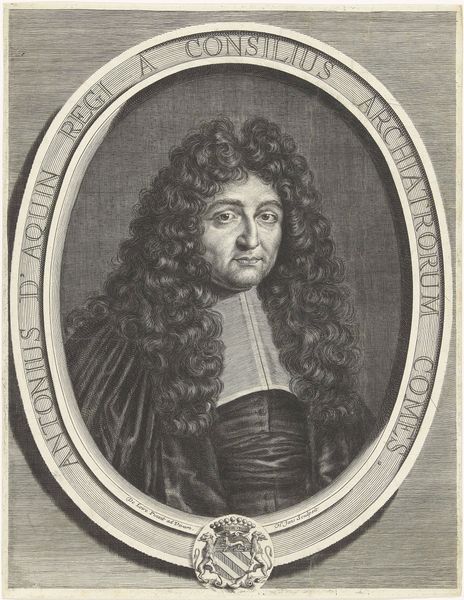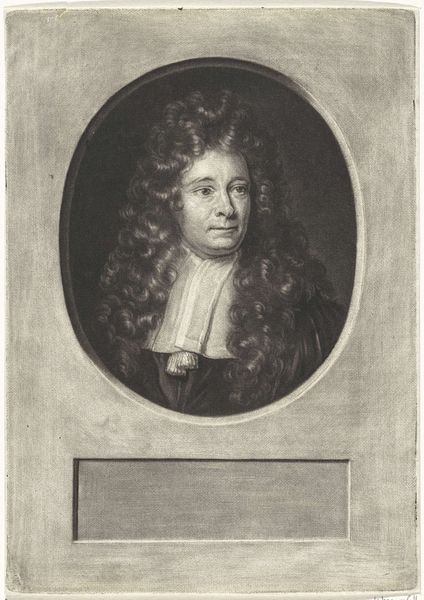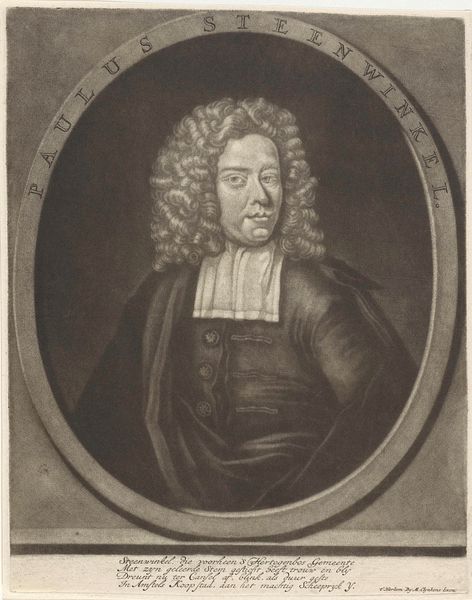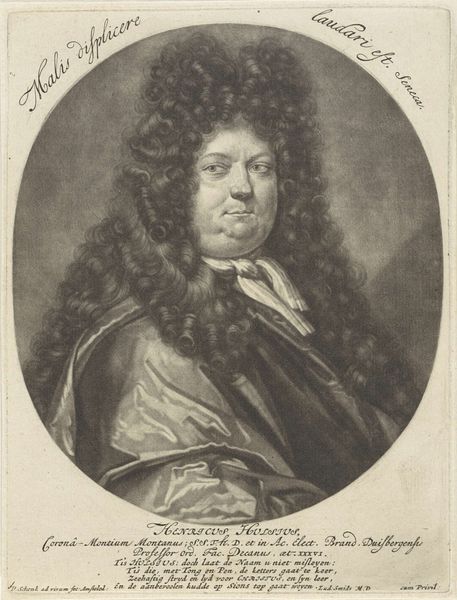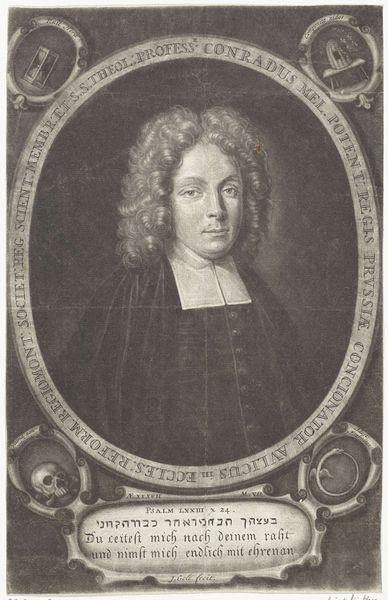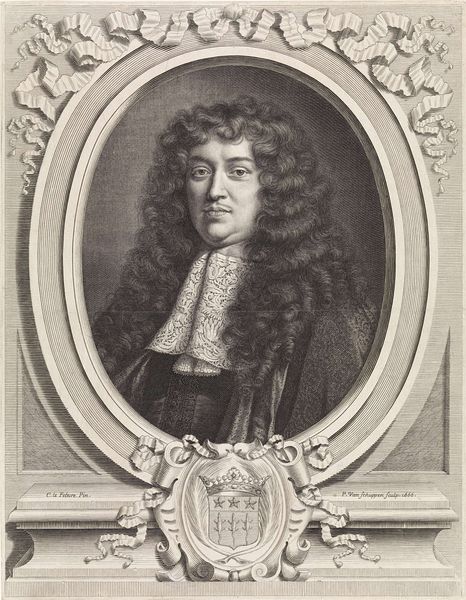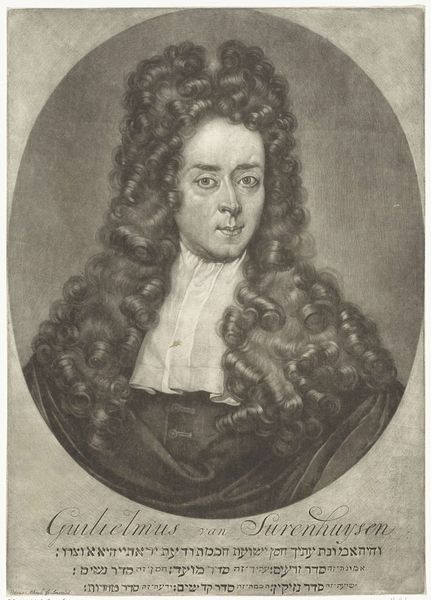
drawing, print, engraving
#
portrait
#
drawing
#
baroque
# print
#
charcoal drawing
#
pencil drawing
#
portrait drawing
#
engraving
Dimensions: height 261 mm, width 177 mm
Copyright: Rijks Museum: Open Domain
Curator: This is a piece entitled "Portret van Johannes Matthaus Münch" created sometime between 1670 and 1713, attributed to Pieter Schenk. The artwork, held here at the Rijksmuseum, is an engraving that captures the likeness of a prominent figure. What is your immediate reaction to the artwork? Editor: Okay, so right off the bat, it's the wig, right? The sheer volume, the curl, it's almost cartoonish! It feels like it has a presence all its own, almost as if the wig is the real subject and the face is just, well, along for the ride. Curator: Well, consider that such elaborate wigs were a key part of elite male identity and status in the baroque period. They represented wealth, power, and adherence to social norms. How the wig frames the face, almost overpowering it, speaks volumes about constructed identities and performances of masculinity in that era. Editor: I get that, the power-dressing of the day, for sure. But look at his eyes—they seem to be pleading, almost a "help me, I'm trapped under all this hair" kind of thing. Maybe it's a comment on the burden of such performance, or maybe I’m projecting… a lot. Curator: Projection is fine. We can interpret the details such as the somber facial expression to connect with larger themes of social and personal conflict. Münch’s civic roles connect directly to the Republic as suggested in the etching at the bottom. Do you see in this image an agreement or an estrangement to this claim to power? Editor: Estrangement. I think estrangement. The details almost tell two stories. Look at the tiny, elaborate coat of arms at the bottom. This man seems disconnected from all the symbols of rank, doesn't he? There's a sense of vulnerability. What's interesting is that even in what seems like a pretty straightforward portrait, we can spin out a more personal, possibly dissenting narrative. Curator: Precisely, and that is precisely how a careful analysis of art history can merge with contemporary identity and social concerns, leading to critical and hopefully, more fruitful dialogues. Editor: Right, making the past speak to our present—or is it the other way around? Either way, I'll never look at another baroque wig the same way again.
Comments
No comments
Be the first to comment and join the conversation on the ultimate creative platform.


